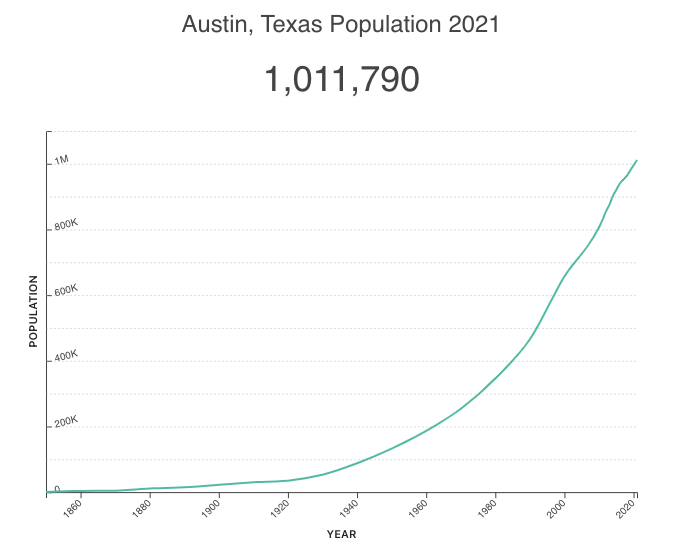The state of Texas—or at least its various marketing entitiies—has been obsessed with its own hugeness for quite some time. Numbers from the 2020 US Census, released Monday, probably won’t do a lot to curb that inclination.
According to the report, the state gained almost 4 million residents in the past decade, bringing its current total to just under 29 million. That makes it the second most populous state in the US (behind California), though the growth rate (around 16 percent) was slightly slower than Utah’s (18 percent) and Idaho’s (17 percent), according to the latest census figures.
The biggest news out of the gate, as states go, is that Texas’ explosive growth over the past decade has resulted in (among other things) its gaining two seats in the US House (bumping it up from 38 to 40). It’s the only state to do so this round: Colorado, Florida, Montana, North Carolina, and Oregon added one seat each, while California, Illinois, Michigan, New York, Ohio, Pennsylvania, and West Virginia lost one apiece.
The city-centric view
Demographic and population data from the 2020 census counts for cities and counties won’t be released until later this year, but that hasn’t stopped the Texas Legislature from revving up the redistricting machine. And, despite the fact that the pandemic delayed those and other numbers, it’s a pretty good bet that the state’s big population centers (also in the top 10 nationwide—Houston, San Antonio, and Dallas) contributed mightily to the overall jump in numbers in the past 10 years.
But what about Austin? Always a valid question. The census’ 2019 population count for the for the city proper—which we all know is only part of the metro’s story—was 978,908, up 22 percent over 2010 numbers. According to the Austin Chamber, the Austin-Round Rock Metropolitan Statistical Area population surpassed 2 million back in 2015 and was up to 2,227,083 in 2019—an an increase of almost 30 percent since 2010, a little under half of which was in Travis County.
The World Population Review offers some interesting 2021 data for the city of Austin, as well as a chart that shows a pretty dramatic rate of population growth (although it was kind of mellow until 1940 or so).
 City of Austin's population growth since forever, graphedVia World Population View
City of Austin's population growth since forever, graphedVia World Population View
According to WPR’s numbers, Austin’s 2020 population within city limits was 1,011,790, an increase of 28 percent since 2010 and a 1.65 percent annual growth rate. (The site also asserts that it’s now the fourth largest city in Texas—sure—and the 10th largest in the US—not so sure, but it’s been hanging out at 11 for a while.)
Notwithstanding any sudden exodus, Austin is currently home to the greatest number of people that have ever lived within its boundaries. But with a population density of around 3,162 people per square mile (darn low), it seems like we could make room for many more.






